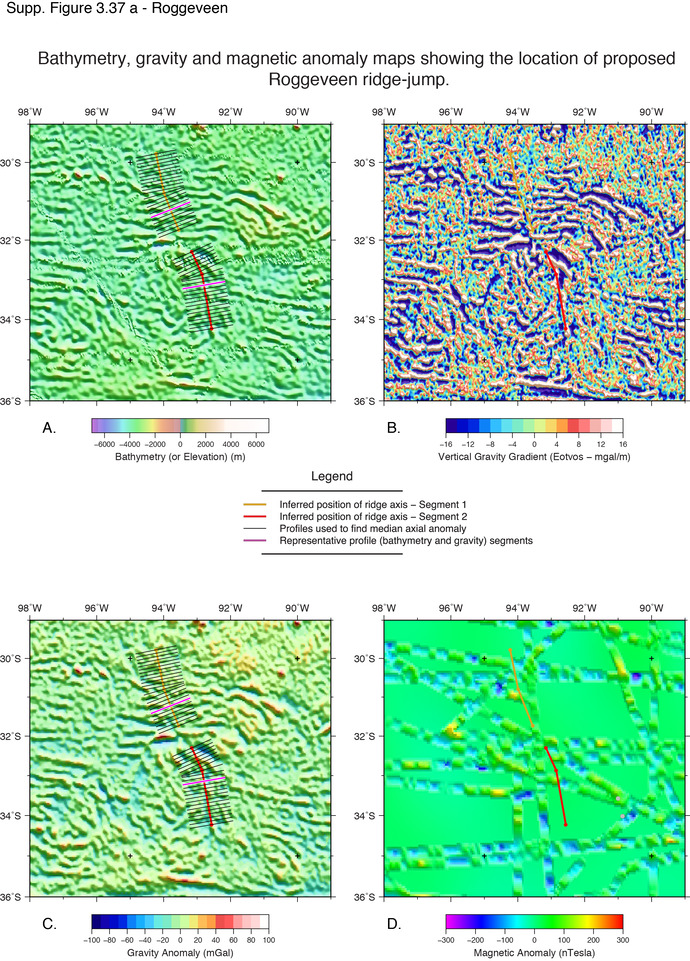| Ocean: | Pacific |
| Spreading centre type: | Large-scale MOR |
| Time of cessation: | |
| Subsequent active spreading centre: | |
| Cessation style: | |
| Later deformation or volcanism: |
Three ridge jumps have been proposed in the eastern Pacific, named Mendoza, Gallego, and Roggeveen, that are frequently reported together and have similar characteristics with respect to timing, morphology and crustal structure and are therefore discussed together. Mammerickx et al. (1980) sought to refine the complex spreading history of the south-east Pacific, combining bathymetric features and magnetic anomalies. Mammerickx et al. (1980) argued for the presence of two extinct ridges, of two different ages and linear trends, the first from the Farallon-Pacific divergent boundary and second formed as the first expression of the East Pacific Rise, between the Pacific and Nazca plate boundary. Anderson and Sclater (1972), had previously observed that the rise south of Mendana fracture zone was 500 m deeper than the Galapagos Rise and therefore likely to be older in age.
Mammerickx et al. (1980) observe that the oceanic crust captured on the Pacific plate, that was generated at the Pacific-Farallon spreading centre, trends to the NW and is parallel to Chron C7 (26 Ma), with several hundred kilometres of crust likely to have been captured. Okal and Bergeal (1983) attempted to map the precise extent of Farallon, Nazca and Pacific captured plate fragments, to determine which factors were controlling stress release for the Pacific Plate. From seismicity in the region, Okal and Bergeal (1983) inferred the minimum and maximum limits of ridge 'jump' lines and inferred the direction of the ridge jumps and where lithospheric fragments had been accreted.
There is no significant linear bathymetric or gravity feature that could be identified in the region of the proposed Roggeveen ridge jump and therefore we do not include this proposed ridge jump in our statistical analysis.
Anderson, R.N. and Sclater, J.G., 1972, Topography and evolution of the East Pacific Rise between 5 S and 20 S, Earth and Planetary Science Letters, v. 14, p. 433–441.
Mammerickx, J., Herron, E. and Dorman, L., 1980. Evidence for two fossil spreading ridges in the southeast Pacific. Geological Society Of America Bulletin, v. 91, no. 00504, p. 263–271.
Okal, E. A., and Bergeal, J.-M., 1983. Mapping the Miocene Farallon Ridge jump on the Pacific plate: a seismic line of weakness. Earth and Planetary Science Letters, v. 63, no. 1, p. 113–122.
